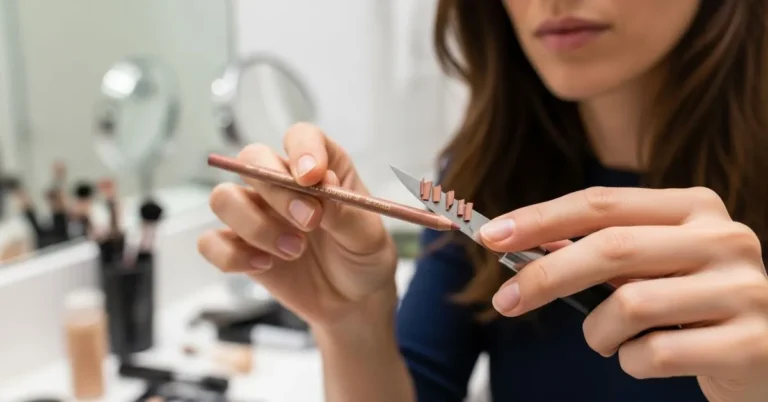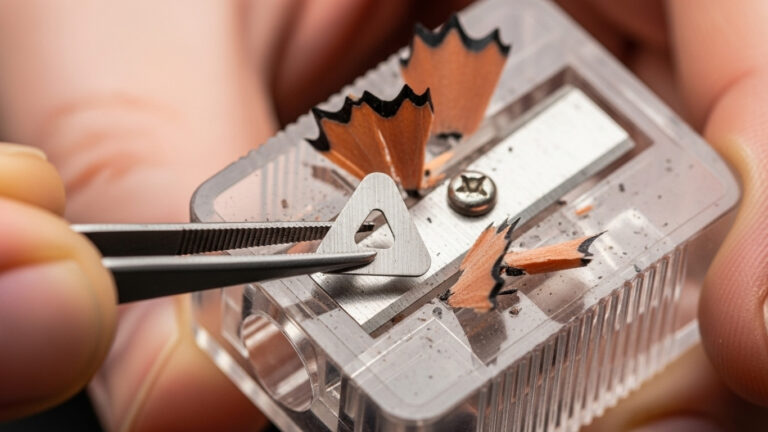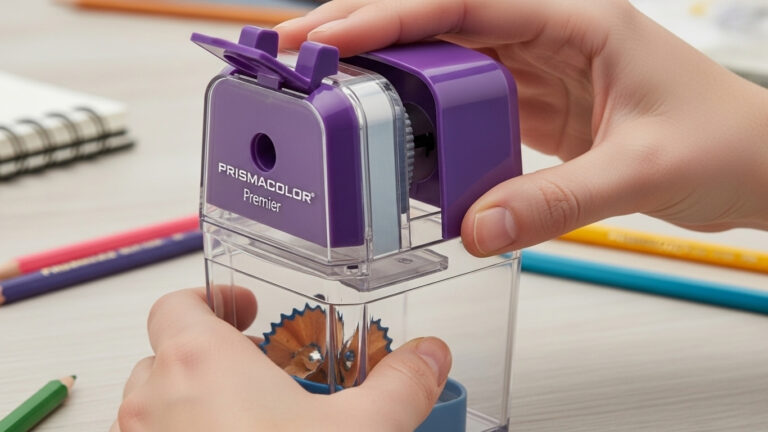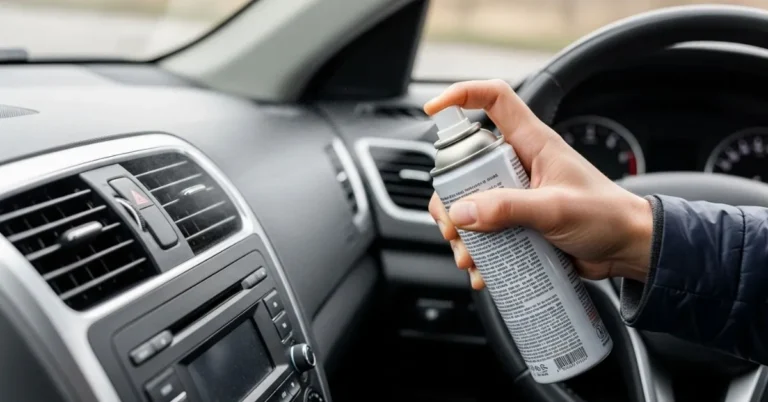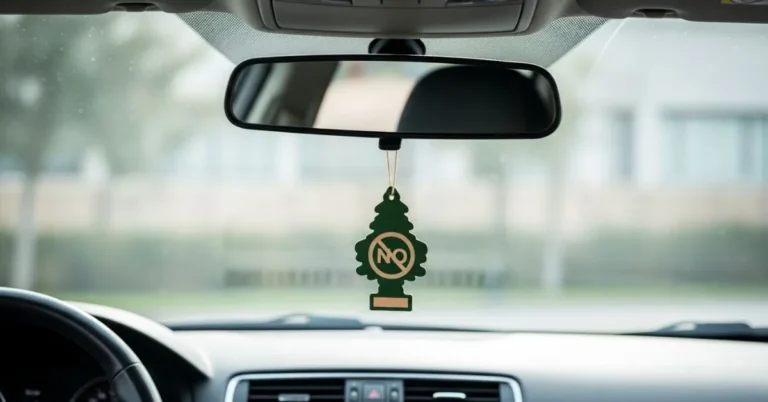
How to remove paint pen from plastic might not be something you thought you’d need to Google until your latest creative project takes an unexpected turn.
Imagine: you’re in the zone, armed with your trusty paint pens, when suddenly oops! a stray mark lands on your favorite plastic water bottle or a cherished phone case. That stubborn paint pen ink seems impossible to remove, and panic starts creeping in. But don’t worry removing paint pen from plastic is easier than you think. You can restore your plastic items without breaking a sweat with the right tricks up your sleeve.
Whether you’re a professional artist, a crafty hobbyist, a parent navigating messy kids’ art projects, or a DIY enthusiast, paint pen stains on plastic can be frustrating. The good news? You don’t have to live with those marks and don’t need harsh chemicals that could ruin the surface.
In this detailed guide, I’ll share expert tips and clever hacks from gentle household remedies to eco-friendly solutions that help you safely, effectively, and affordably get the job done. Ready to banish those stubborn stains for good? Let’s get started!
Contents
- 1 Why Is Removing Paint Pen from Plastic So Challenging?
- 1.1 1. Start with Soap and Water: The Easiest Paint Pen Removal Method
- 1.2 2. Rubbing Alcohol: A Reliable Classic for Paint Pen Ink
- 1.3 3. Nail Polish Remover (Acetone): Handle with Caution
- 1.4 4. Baking Soda Paste: Eco-Friendly and Gentle Abrasive
- 1.5 5. Magic Erasers: Scrub Away Paint Pen Ink with Ease
- 1.6 6. WD-40: A Surprising and Handy Paint Pen Remover
- 1.7 7. Commercial Paint Removers: Choose Plastic-Safe Options
- 1.8 8. Preventing Paint Pen Stains on Plastic: Tips from the Experts
- 1.9 9. Know Your Paint Pens: Quick-Dry vs. Permanent
- 1.10 10. Caring for Your Plastic Items After Paint Removal
- 1.11 FAQs: How to Remove Paint Pen from Plastic
- 1.11.1 Q1: Is it safe to use bleach to remove paint pen marks from plastic?
- 1.11.2 Q2: How quickly should I act to remove the paint pen from the plastic?
- 1.11.3 Q3: Is nail polish remover safe for all plastics?
- 1.11.4 Q4: Are Magic Erasers safe for all plastic types?
- 1.11.5 Q5: What’s the most eco-friendly method to remove paint pen from plastic?
- 1.12 Experts Thoughts
- 1.13 About the Author
Why Is Removing Paint Pen from Plastic So Challenging?
Before diving into solutions, it’s essential to understand why removing paint pen from plastic can be challenging. Paint pens use quick-drying, waterproof, and permanent ink designed to adhere strongly to surfaces including plastic. Additionally, plastics vary widely in texture, ranging from slick, smooth finishes to rough or matte surfaces, which affects how the paint adheres.
If you grab just any cleaner, especially harsh chemicals or abrasive tools, you risk scratching, discoloring, or weakening your plastic. This means the challenge is twofold: dissolve or lift the paint without damaging the underlying plastic.
Knowing this balance lets you choose the best removal method one that gets the job done without damaging your plastic.
1. Start with Soap and Water: The Easiest Paint Pen Removal Method
You might be surprised, but sometimes, the most straightforward method is all you need. If the paint pen mark is fresh or not thoroughly dried, a bit of warm water and gentle dish soap can do wonders.
- Stir a splash of gentle dish soap into a bowl of warm water until it forms a light sudsy mix.
- Grab a soft cloth or sponge and dunk it into the soapy water.
- Gently scrub the paint pen mark with a circular motion.
- Rinse and repeat if necessary.
This method is perfect for recent marks and is completely safe for all plastics. Plus, it’s super affordable you probably already have everything at home!
2. Rubbing Alcohol: A Reliable Classic for Paint Pen Ink
When soap and water don’t cut it, rubbing alcohol (isopropyl alcohol) is the next best option for removing paint pen from plastic. Alcohol breaks down many types of inks and dries quickly without leaving residue.
How to use rubbing alcohol effectively:
- Coat a cotton ball or soft cloth with a small amount of rubbing alcohol (a concentration of 70% or higher is ideal).
- Gently rub the paint pen stain in small, circular motions.
- Don’t saturate the plastic a little goes a long way.
- With a clean, damp cloth, softly blot away any leftover ink and alcohol residue.
Rubbing alcohol is widely available, budget-friendly, and works great on many plastics. Just avoid using it on plastics that react poorly (test on a hidden spot first).
Read More: Can You Bring a Pencil Sharpener on Plane? TSA Rules
3. Nail Polish Remover (Acetone): Handle with Caution
Nail polish remover containing acetone can be surprisingly effective for stubborn paint pen stains. However, acetone is a strong solvent that can dissolve or discolor certain plastics. Test it carefully on a small, hidden area before treating the visible spot.
Tips for safe use:
- Immerse a cotton swab in nail polish remover to carefully tackle the paint stain.
- Rub gently and quickly prolonged exposure risks damaging the plastic.
- Swiftly clean the area using warm, soapy water to eliminate any remaining acetone.
- Avoid delicate or soft plastics such as polycarbonate or acrylic.
Use this method as a last resort when other, gentler options are not effective.
4. Baking Soda Paste: Eco-Friendly and Gentle Abrasive
For those who prefer green cleaning hacks, baking soda paste is a superstar. It isn’t very polite, safe for most plastics, and non-toxic.
How to make and use baking soda paste:
- Mix baking soda and a small amount of water until you achieve a thick, creamy paste.
- Apply the paste directly to the paint pen mark.
- Using circular motions, gently rub the area with a soft cloth or sponge.
- Rinse thoroughly with water and dry.
This method is ideal for homes with kids and pets, as it avoids harsh chemicals and it’s also easy on the wallet.
5. Magic Erasers: Scrub Away Paint Pen Ink with Ease
Magic Erasers, made of melamine foam, are a go-to cleaning tool for many tricky stains, including paint pen marks on plastic. They work like super-fine sandpaper to lift stains without the use of chemicals.
To use a Magic Eraser safely:
- Dampen the eraser slightly with water.
- Gently rub the paint pen mark using light pressure.
- Rinse the plastic afterward to remove any residue.
While effective, avoid heavy scrubbing on soft or delicate plastics to prevent tiny scratches.
6. WD-40: A Surprising and Handy Paint Pen Remover
If you have WD-40 sitting in your toolbox, it can help loosen and remove paint pen ink from plastic.
Here’s how:
- Spray a small amount on a clean cloth.
- Rub the paint pen stain gently.
- Dry the area by wiping it with a clean cloth.
- Follow up by washing the plastic with mild soap and water to remove oily residue.
WD-40’s lubricating properties soften the paint without harsh abrasives, making it a clever trick to remember.
7. Commercial Paint Removers: Choose Plastic-Safe Options
When all else fails, commercial paint removers designed for plastics might be necessary. These specialized products dissolve tough inks without harming plastic surfaces.
Important tips when using commercial removers:
- Always check that the product is explicitly labeled as safe for plastics.
- Follow all instructions carefully and wear gloves for protection.
- Test the remover on an inconspicuous area first.
- Use in a well-ventilated area.
Eco-conscious consumers can find biodegradable, low-toxicity options that minimize environmental impact while cleaning effectively.
8. Preventing Paint Pen Stains on Plastic: Tips from the Experts
The best way to save yourself time and stress is to prevent it. Here are easy ways to avoid having to figure out how to remove paint pen from plastic in the first place:
- Cover plastic surfaces with painter’s tape before using paint pens nearby.
- Work on a protected surface or use drop cloths to catch stray marks.
- Test paint pens on scrap plastic before applying them to essential items.
- Seal plastic surfaces with a clear coat or protective spray to create a barrier that is easier to clean.
With these steps, you can focus more on creating and less on cleaning.
9. Know Your Paint Pens: Quick-Dry vs. Permanent
Understanding the type of paint pen you’re using can make removal easier. Quick-dry or water-based pens tend to come off plastic more easily with soap and water if caught early. Permanent paint pens, often solvent-based, bond more tightly and may require stronger removers.
Always check the manufacturer’s information and plan your cleaning accordingly.
10. Caring for Your Plastic Items After Paint Removal
Once you’ve successfully removed paint pen ink, it’s good to care for your plastic to maintain its appearance:
- Wash the plastic with gentle soap and water to remove any residue from the cleaning process.
- Dry thoroughly to avoid water spots or mold.
- Steer clear of abrasive scrubbers that might scratch the surface.
- Store plastic items away from direct sunlight to prevent fading or warping.
This will keep your plastic looking fresh and ready for your next creative adventure.
Read More: Who Made the Pencil Sharpener? The Surprising Inventor Behind It
FAQs: How to Remove Paint Pen from Plastic
Q1: Is it safe to use bleach to remove paint pen marks from plastic?
A1: Bleach is usually not recommended because it can discolor and damage plastic surfaces. Safer options include rubbing alcohol or baking soda paste.
Q2: How quickly should I act to remove the paint pen from the plastic?
A2: The sooner, the better! Fresh paint pen marks are much easier to remove. Older stains may require stronger solvents and more effort to remove.
Q3: Is nail polish remover safe for all plastics?
A3: Acetone-based removers can damage certain plastics, so always test on a small, inconspicuous area before full use.
Q4: Are Magic Erasers safe for all plastic types?
A4: Magic Erasers work well on many plastics but can cause mild abrasion on soft or delicate plastics if used with too much pressure.
Q5: What’s the most eco-friendly method to remove paint pen from plastic?
A5: Mixing baking soda with water to form a paste and gently scrubbing is an inexpensive, non-toxic, and environmentally friendly way to clean most plastic surfaces.
Experts Thoughts
Mastering how to remove paint pen from plastic means you never have to stress about accidental stains again. With gentle household items like soap, rubbing alcohol, or baking soda, paired with handy tools like Magic Erasers and WD-40, you can tackle those pesky paint pen marks with confidence.
Remember to test any new method on a hidden area and be patient sometimes, it takes a little elbow grease and repetition. And when prevention is possible, cover and protect your plastics to save time later.
Do you have a stubborn stain? Try these expert tips and tricks your plastic items (and your creative spirit) will thank you!

